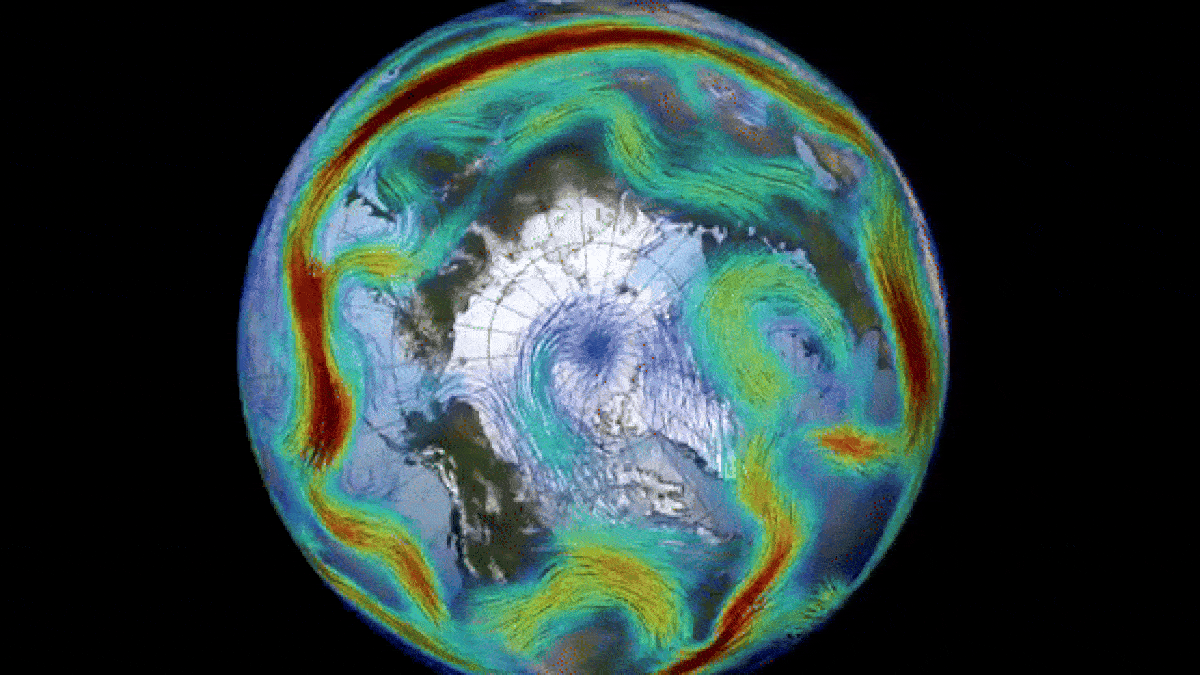The Earth's polar vortex has reversed: causes and consequences
Follow us on Google News (click on ☆)
Typically, the vortex spins counterclockwise with wind speeds similar to a Category 5 hurricane, about 155 mph (approximately 250 km/h). This phenomenon is most pronounced during the winter months and extends up to the stratosphere, about 31 miles (around 50 kilometers) above our heads.

The polar vortex plays a crucial role in the circulation of the polar jet stream, as shown in this image.
Credit: NASA/Goddard Space Flight Center
This reversal can be explained by a phenomenon known as sudden stratospheric warming, when, within a few days, the temperature of the stratosphere can soar by nearly 90 degrees Fahrenheit (about 50 degrees Celsius). This warming is due to atmospheric "planetary waves", resulting from the rise of warm air in a region of different density, which is then pushed back down by the rotation of the Earth.
The current reversal of the vortex began on March 4, but signs already indicate a slowing of the winds, presaging a return to normal soon. This phenomenon is not without consequence: although it does not cause a major change in the jet stream or usual weather patterns, it has led to a record peak of ozone above the North Pole. This temporary increase in ozone, opposite to an ozone hole, will disappear once the vortex stabilizes.
Disturbances in the polar vortex can have significant climatic repercussions, as evidenced by the extreme events of 2019 in the United States. However, the upheaval of recent weeks has not altered the configuration of the jet stream, meaning that climatic patterns will largely remain unchanged.
This incident marks the second reversal of its kind this year, the previous one slightly cooling certain territories in January. Historical records indicate that such sudden stratospheric warming events are more likely during phases of El Niño or La Niña, phases of the natural global warming and cooling cycle, making the atmosphere more unstable and prone to such inversions.
Currently, in the midst of a major El Niño phase, it's possible that other reversals or disturbances could occur in the coming year.